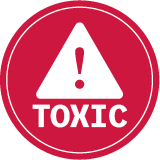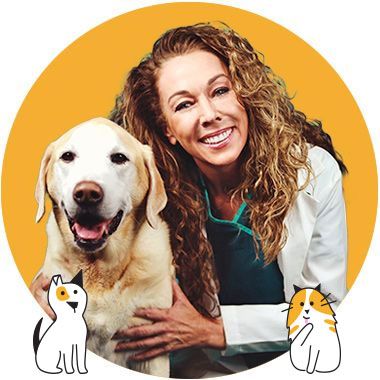The Hidden Health Risk Behind Doggie Breath
Find out the real dangers behind 'doggie breath' and know the warning signs, so you can protect your dog's smile — and health — for years to come.

STORY AT-A-GLANCE
- Bad breath in dogs is not normal — it is often the first sign of periodontal disease, a silent infection that can damage teeth, gums, and even internal organs if left untreated
- Dental bacteria do not just stay in the mouth; they can enter the bloodstream, harming the heart, liver, and kidneys, and even shortening your dog's lifespan
- Most dogs show signs of dental disease by age 3, but early detection through regular cleanings and checkups can prevent irreversible damage and costly treatments
- Consistent at-home care — brushing, safe chews, and natural antimicrobial aids — can dramatically reduce plaque, tartar, and infection, improving your dog's comfort and vitality
- Prioritizing dental health adds years of joy, energy, and connection with your dog, transforming "doggie breath" from a warning sign into a reminder of your care
You love that happy grin your dog flashes when you walk in the door. But what if that "doggie breath" you have brushed off as normal is actually a sign of something much deeper — and far more dangerous?
Dental health is not just about fresh breath or clean teeth. It is one of the most important but overlooked factors in your dog's overall well-being. In fact, by age 3, nearly 80% to 90% of dogs already show signs of dental disease.1,2,3,4
What most pet parents do not realize is that what happens in your dog's mouth does not stay there. Bacteria from infected gums can enter the bloodstream, damaging the heart, liver, and kidneys over time. Left unchecked, dental problems can take years off your dog's life.
The Hidden Danger Lurking in Your Dog's Mouth
The unpleasant odor from your dog's mouth is not just about poor hygiene — it is a red flag. Behind the smell often lies periodontal disease, the most common health issue in dogs.
It starts innocently enough. After your dog eats, bacteria in the mouth combine with food particles and saliva to form a sticky film called plaque. Within 24 hours, that plaque hardens into tartar, a rough surface that traps even more bacteria.5 The gums become irritated and inflamed, and small pockets form between the gums and teeth. These pockets harbor bacteria that thrive beneath the gumline, where you cannot see them.
Over time, the infection attacks the tissues and bones supporting your dog's teeth. As the gums recede and the bone deteriorates, teeth loosen and chewing becomes painful. Every meal becomes a challenge.
But the danger does not stop there. Once bacteria enter the bloodstream through the inflamed gum tissue, they travel to vital organs. Studies and veterinary experience show a direct link between dental infections and diseases of the heart, kidneys, and liver. That is why veterinarians now consider dental health a cornerstone of whole-body health.6,7,8
The heartbreaking part? This slow, silent destruction often goes unnoticed until the damage is advanced. If your dog's breath has changed recently or you find yourself joking about how bad it is, it is time for a closer look. Think of it as your dog's way of telling you something is wrong.
The Mouth-Body Connection — How Oral Health Affects Longevity
It is easy to underestimate how much your dog's mouth affects the rest of their body. But the truth is, the mouth is a gateway to the entire system.
When bacteria from gum infections enter the bloodstream, they can damage heart valves, leading to conditions like endocarditis. They can strain the kidneys and liver, which work overtime to filter those toxins out of the blood. Over months and years, this constant bacterial assault can shorten your dog's lifespan.9,10
Veterinarians often report dramatic transformations after treating dental disease. Dogs who seemed "slowed by age" suddenly regain their energy once their mouth pain is gone. Good dental care does not just save teeth — it can add potentially years to your dog’s life and bring back their joy for living.
Subtle Signs of Trouble You Should Not Ignore
Dogs are masters at hiding pain. They rarely cry or whimper unless the discomfort is severe. That is why dental disease often goes undetected until it is advanced. Here are some signs to watch for:
- Persistent bad breath (worse than usual "doggie breath")
- Red, swollen, or bleeding gums
- Brown or yellow tartar along the gumline
- Drooling or pawing at the mouth
- Difficulty eating or favoring one side while chewing
- Loose, missing, or broken teeth
- Changes in mood, appetite, or energy levels
- Facial swelling, especially in the area between the eyes and the upper lip
If you notice any of these, take action right away. Schedule a dental exam with your veterinarian. Early intervention can prevent tooth loss and stop infection before it spreads.11,12
Professional Dental Care — What Really Happens at the Vet
A professional veterinary cleaning is not just a "fancy tooth brushing." It is a thorough medical procedure that reaches places no toothbrush or dental chew can. Under anesthesia, your veterinarian can:
- Remove tartar above and below the gumline
- Polish teeth to prevent future plaque buildup
- Inspect for broken teeth, abscesses, or hidden decay
- Take dental radiographs (X-rays) to detect disease below the gumline
Many owners are amazed at the difference. After cleaning, dogs often act happier and more energetic — proof that chronic mouth pain had been weighing them down.13
Depending on your dog's age and dental history, your veterinarian may recommend cleanings every one to three years.14 For dogs with severe tartar or recurring problems, more frequent visits may be needed.
Think of professional cleanings as a reset button for your dog's mouth. Once tartar and infection are cleared, you can maintain that clean slate with consistent at-home care.
Simple At-Home Steps to Protect Your Dog's Smile
The good news? You do not have to wait for a veterinary visit to make a difference. Daily habits play a huge role in preventing disease. Here is what works best:15,16
- Brush your dog's teeth daily — This is the single most effective way to prevent dental disease. Use a dog-specific toothbrush and veterinary toothpaste (never human toothpaste, as it can be toxic). Start slowly — let your dog lick the toothpaste, then gently rub a few teeth.17
Praise and reward after each session. With patience and consistency, most dogs learn to tolerate, even enjoy, brushing. Focus on the outer surfaces of the teeth — especially the back molars, where plaque tends to build up and then calcify into tartar. Even 30 seconds a day can make a big difference. - Use dental wipes or gels if brushing is hard — If your dog resists brushing, dental wipes are a good backup. They will not reach under the gums like brushing does, but they can remove surface bacteria and freshen breath. Veterinary-approved gels or water additives can also help reduce plaque accumulation when used daily. These options are not likely to remove tartar (plaque that has calcified and hardened).
- Offer safe dental chews and toys — Dogs love to chew, and this natural behavior helps clean their teeth. Choose chews with the Veterinary Oral Health Council (VOHC) seal, which ensures they are proven to reduce plaque and tartar.18
You can also offer raw carrots, apple slices, or frozen green beans for a healthy, natural chew that massages gums and scrapes away buildup. Avoid hard bones, antlers, or synthetic chews that can fracture teeth.
A rule of thumb is that you should be able to press your thumb into or bend any chew that you give your dog. Be sure that your pet is always chewing under direct supervision; what works well as a chew for one pet could be a choking hazard for another pet. - Boost oral health naturally — Small additions to your dog's routine can go a long way:19
- Coconut oil — Its antimicrobial properties can help fight bacteria. Rub a tiny amount on the gums twice weekly.
- Parsley and mint — Add to meals for fresh breath.
- Turmeric — Offers natural anti-inflammatory support for gums.
- Apple cider vinegar — Add a teaspoon to your dog's water once a week to help control bacterial growth naturally.
- Keep up with regular veterinary visits — Even the best at-home care cannot replace professional checkups. During your dog's annual exam, your vet will look for hidden signs of disease, recommend cleanings when needed, and advise you on any extra steps to take for your dog's breed or age.20
Some dogs, especially toy breeds, brachycephalics (like pugs and bulldogs), and seniors, need extra monitoring since they are more prone to gum disease and tooth loss.21
What Happens if You Don't Act
Ignoring dental care does not just mean your dog loses a few teeth. It means risking their entire health. Chronic gum infection floods the body with bacteria and inflammation, which can:
- Damage heart valves, causing heart disease
- Impair kidney and liver function
- Lead to chronic pain and decreased appetite
- Shorten lifespan potentially by years
And once periodontal disease takes hold, it is difficult to reverse and, in severe cases, can be irreversible. Treatment can become expensive and complicated, involving extractions, antibiotics, and surgical healing.
By contrast, prevention is simple and affordable. A few minutes of brushing each day can save you hundreds in veterinary bills and, more importantly, protect your dog’s health and happiness.22
Celebrating Your Dog's Smile — The Bigger Picture
Caring for your dog's teeth should be a year-round priority. When you prioritize your dog's dental health, you are doing more than preventing bad breath. You are protecting their heart, kidneys, and overall vitality. You are ensuring that your furry friend stays happy, active, and pain-free for as long as possible.
You do not need to be perfect — just consistent. A few minutes each day, a few thoughtful choices at mealtime, and a yearly vet visit can add up to years of extra tail wags and healthy adventures.
So next time you catch a whiff of "doggie breath," remember, it is not just a smell. It is a message. Your dog is counting on you to listen.
Sources and References
- 1,5,10,16,19,22 Animal Wellness Magazine, September 9, 2025
- 2,21 J Small Anim Pract. 2021 Dec;62(12):1051-1061
- 3 J Small Anim Pract. 2020 Sep;61(9):529-540
- 4 Cornell University College of Veterinary Medicine, Periodontal Disease
- 6,9,12,13,18 Pets R Family Veterinary Hospital, How Dental Health Can Add Years to Your Pet’s Life!
- 7 Research in Veterinary Science, Volume 125, August 2019, Pages 136-140
- 8 Prev Vet Med. 2011 May 1;99(2-4):193-200
- 11,14,15,20 Pet Care Rx, October 17, 2024
- 17 Veterinary Partner, VIN, Brushing Your Dog's Teeth










